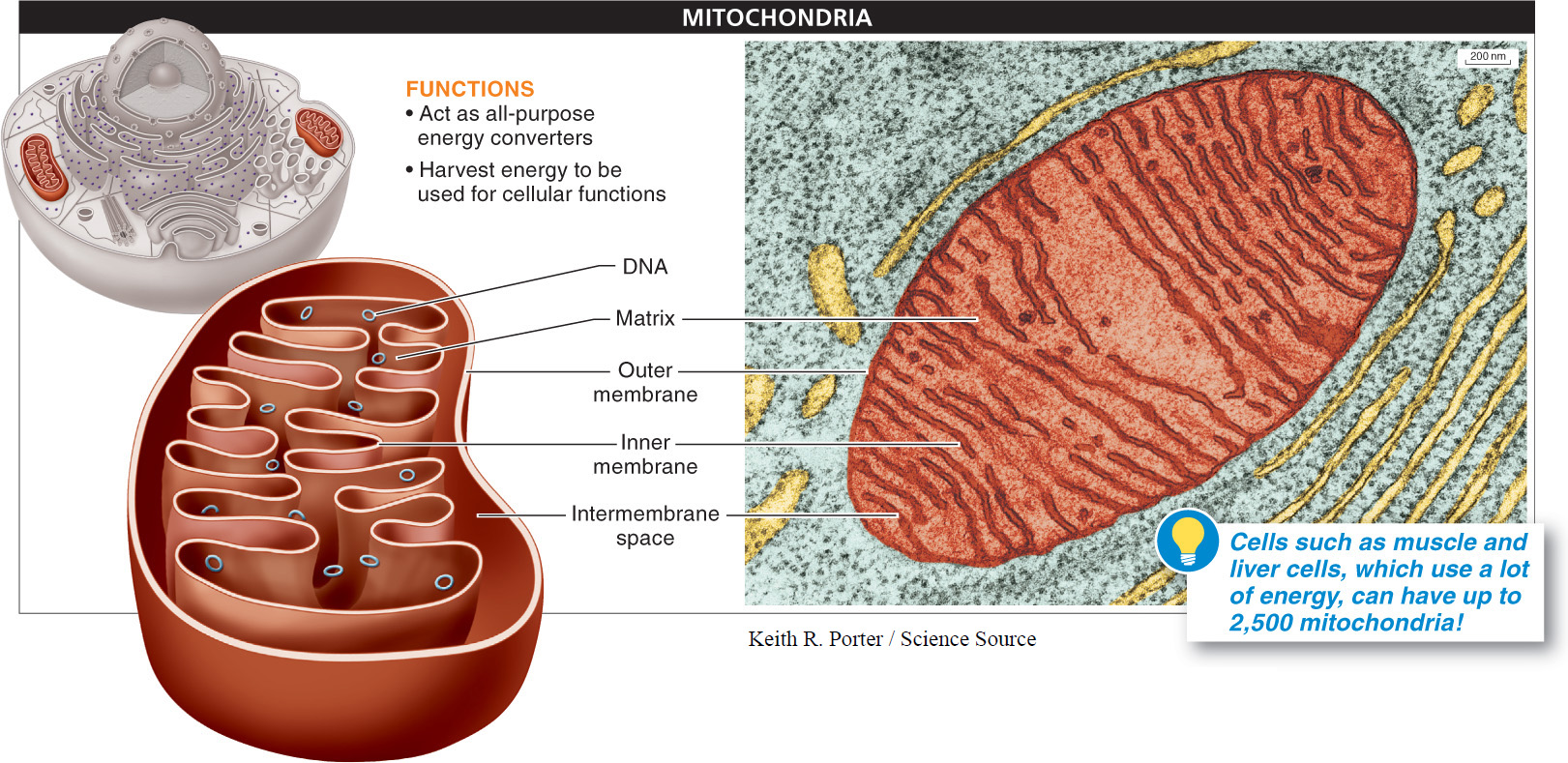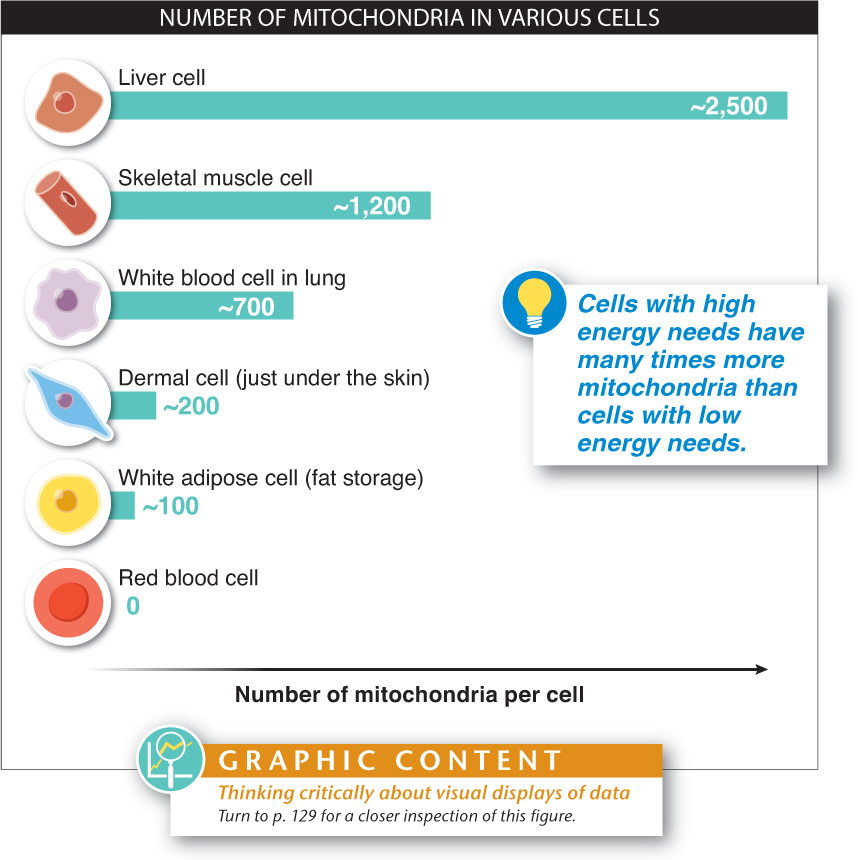Cars have it easy: we generally put only a single type of fuel in them, and it is exactly the same fuel every time. With human bodies it’s a different story. During some meals we put in meat and potatoes. Other times, fruit or bread or vegetables, popcorn and gummy bears, pizza and ice cream. Yet no matter what we eat, we expect our body to utilize the energy in these various foods to power all the reactions that make it possible for us to breathe, move, and think. The mitochondria are the organelles that make this possible (FIGURE 3-31).

Mitochondria (sing. mitochondrion) are the cell’s all-
116
As with so many aspects of our bodies, form follows function. Cells that are not very metabolically active, such as some fat storage cells in humans, have very few mitochondria. Other cells, such as muscle, liver, and sperm cells in animals and fast-

To visualize the structure of a mitochondrion, imagine a plastic sandwich bag. Now take another, bigger plastic bag and stuff it inside the sandwich bag. That’s the structure of mitochondria: there is a smooth outer membrane and a scrunched-
117
As we learned in our earlier discussion of endosymbiosis, mitochondria may very well have existed, billions of years ago, as separate, single-
We’re always taught that our mothers and fathers contribute equally to our genetic composition, but this isn’t quite true. The mitochondria in every one of your cells (and the DNA that comes with them) come from the mitochondria that were initially present in your mother’s egg, which, when fertilized by your father’s sperm, developed into you. In other words, all of your mitochondria are descended from your mother’s mitochondria. The tiny sperm contributes DNA, but no cytoplasm and, hence, no mitochondria.
We all have more DNA from one parent than the other. Who is the bigger contributor: mom or dad? Why?
Consequently, mitochondrial DNA is something that we inherit exclusively from our mothers. This is true not only in humans but in most multicellular eukaryotes. As the fertilized egg develops into a two-
Given the central role of mitochondria in converting the energy in food molecules into a form that is usable by cells, you won’t be surprised to learn that mitochondrial malfunctions can have serious consequences. Recent research has focused on possible links between defective mitochondria and diseases characterized by fatigue and muscle pain. It seems, for instance, that many cases of “exercise intolerance”—extreme fatigue or cramps after only slight exertion—
TAKE-HOME MESSAGE 3.15
In mitochondria, which are found in nearly all eukaryotic cells, the energy contained in the chemical bonds of carbohydrate, fat, and protein molecules is converted into carbon dioxide, water, and ATP, the energy source for all cellular functions and activities. Mitochondria may have their evolutionary origins as symbiotic bacteria living inside other cells.
What is the function of mitochondria? What evidence suggests that mitochondria were separate, bacteria-
Mitochondria function within the cell as energy converters. The energy contained in the chemical bonds of carbohydrates, fats, and proteins is converted into energy stored in carbon dioxide, water, and ATP, with some energy lost as heat. (You’ll learn more about this process in Chapter 4.) There are several pieces of evidence that suggest mitochondria existed billions of years ago as separate, single-celled bacteria-like organisms. First, mitochondria are similar to bacteria in size and shape. Mitochondria have their own DNA that is highly related to bacterial DNA. Mitochondria divide by fission. Also, mitochondria have ribosomes, similar to those found in bacteria, allowing them to synthesize some of their own proteins.